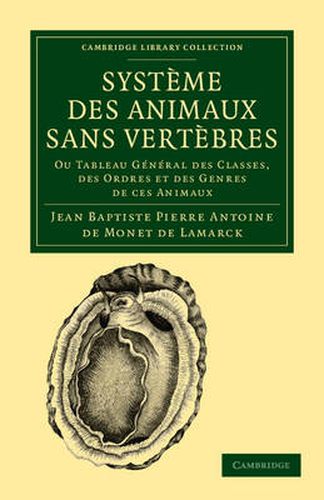Readings Newsletter
Become a Readings Member to make your shopping experience even easier.
Sign in or sign up for free!
You’re not far away from qualifying for FREE standard shipping within Australia
You’ve qualified for FREE standard shipping within Australia
The cart is loading…






The great French zoologist Lamarck (1744-1829) was best known for his theory of evolution, called ‘soft inheritance’, whereby organisms pass down acquired characteristics to their offspring. Originally a soldier, Lamarck later studied medicine and biology, becoming particularly interested in botany; his distinguished career included admission to the French Academy of Sciences (1779), and appointments as Royal Botanist (1781) and as professor of zoology at the Musee Nationale d'Histoire Naturelle in 1793. Acknowledged as the premier authority on invertebrate zoology, he is credited with coining the term ‘invertebrates’. This work, published in Paris in 1801, expands on Linnaeus’ classification system, introducing seven sub-categories, creating finer divisions along lines of the species’ inherent physical traits, and describing their natural characteristics and organisation. Also included is Lamarck’s museum lecture, delivered in 1800, in which he first set out his ideas on evolution.
$9.00 standard shipping within Australia
FREE standard shipping within Australia for orders over $100.00
Express & International shipping calculated at checkout
The great French zoologist Lamarck (1744-1829) was best known for his theory of evolution, called ‘soft inheritance’, whereby organisms pass down acquired characteristics to their offspring. Originally a soldier, Lamarck later studied medicine and biology, becoming particularly interested in botany; his distinguished career included admission to the French Academy of Sciences (1779), and appointments as Royal Botanist (1781) and as professor of zoology at the Musee Nationale d'Histoire Naturelle in 1793. Acknowledged as the premier authority on invertebrate zoology, he is credited with coining the term ‘invertebrates’. This work, published in Paris in 1801, expands on Linnaeus’ classification system, introducing seven sub-categories, creating finer divisions along lines of the species’ inherent physical traits, and describing their natural characteristics and organisation. Also included is Lamarck’s museum lecture, delivered in 1800, in which he first set out his ideas on evolution.